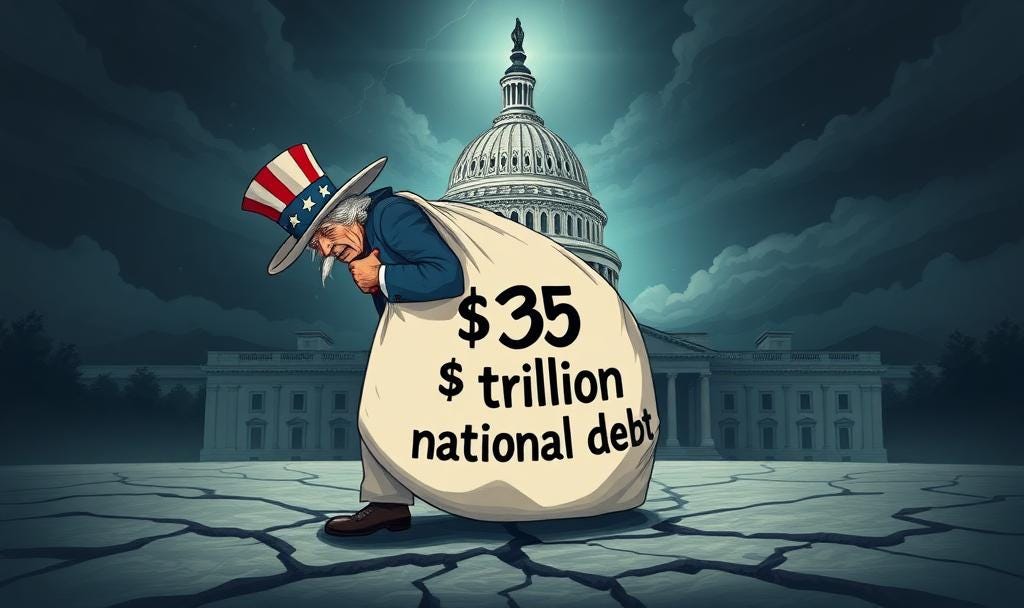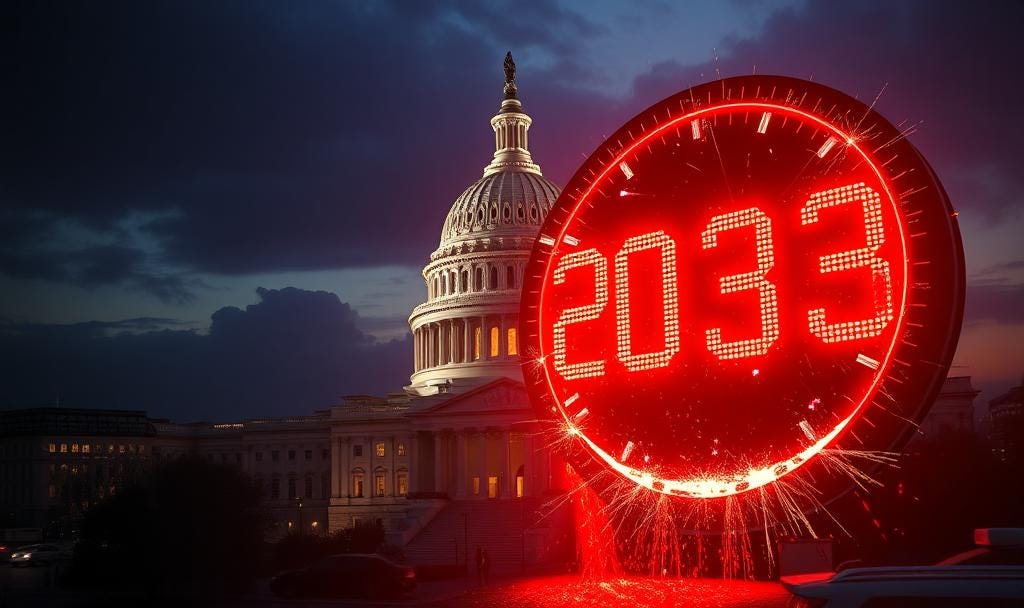Will the U.S. Government Default in Our Lifetime?
Short answer: Yes. And it’s likely to happen within the next 10 years.

Will the U.S. Government Default in Our Lifetime?
Short answer: Yes. And it’s likely to happen within the next 10 years.
That might sound extreme—but the data doesn’t lie, and history doesn’t forget. America is facing a fiscal future that no longer adds up. If you’re under 60, there’s a very real chance you’ll witness the first true default in U.S. history.
In this article, we’ll look at:
What a default actually means
Why it’s no longer unthinkable
The math that’s pointing to collapse
What history—and recent events—are warning us
How to prepare for what’s coming
What Does “Default” Really Mean?
When most people hear “default,” they picture the U.S. skipping a bond payment and setting off a global panic. That’s one version—but it’s not the only one.
A government default can take multiple forms:
Explicit default: Failing to pay bondholders on time (rare, catastrophic)
Implicit default: Paying debts with devalued dollars (inflation-driven)
Structural default: Reneging on promises like Social Security, pensions, or Medicare
Default doesn’t always happen overnight. Sometimes, it's a long, grinding erosion of trust and purchasing power. But make no mistake—default is still default, even when it’s dressed up in political spin.
Why the U.S. Can No Longer Escape This
The U.S. government owes over $35 trillion—and that number is growing by over $1 trillion every 100 days.
Meanwhile:
Interest payments are now higher than defense spending
Medicare and Social Security are running toward insolvency
Tax revenues aren’t keeping pace—even in “good” years
Political gridlock makes meaningful reform impossible
This isn’t a projection. It’s a mathematical certainty.
We are living inside a system that was designed for a different era—one with more workers than retirees, more time than debt, and more will than denial.
None of those conditions exist anymore.
What History Tells Us
Great empires don’t fall because they want to. They fall because they must.
When Rome collapsed, it wasn’t because someone pulled a lever. It was because:
The currency was debased
Public trust collapsed
The state made promises it couldn’t keep
The costs of maintaining empire outgrew its ability to fund it
Sound familiar?
Modern parallels—like Argentina, Venezuela, or even the U.K. in the 1970s—show that sovereign default doesn't always come as a bang. Sometimes, it’s a slow slide into dysfunction, denial, and despair—until one day, the dam breaks.

The Timeline: Why It’s Coming Within a Decade
Here’s why this isn't a question of if, but when—and why that when is soon:
The Social Security trust fund runs out by the early 2030s
Interest payments will devour the entire discretionary budget if rates stay elevated
By 2035, Medicare and Social Security will consume all federal tax revenue
Debt-to-GDP will cross dangerous historical thresholds within 5–8 years
And unlike in past debt crises, the U.S. has:
No political consensus
No fiscal discipline
No external force pressuring reform
No room left to "grow out of it"
What Happens After?
The U.S. won’t disappear, but its role—and your way of life—could change dramatically.
The dollar may lose global trust
Benefits could be slashed or inflated away
Taxes will rise, but still not be enough
Civil unrest and political extremism may grow
Financial repression (capital controls, restrictions) becomes more likely
Default is the great reset button—not in the conspiratorial sense, but in the historical one. When governments default, they start over—but the people pay the price.

How to Prepare Now
You don’t need to panic. But you do need to position yourself wisely.
We’ll cover practical strategies in future posts, but here are a few core ideas:
Reduce dependence on government programs
Diversify savings into hard assets or inflation-resistant instruments
Prioritize real-world resilience: skills, supplies, community
Stay informed—and think long term
Once you understand the collapse, the next step is escaping the dollar itself.
👉 Read: Escape the Dollar: Intro to Real Assets That Hold Value to learn how to move into assets that actually survive inflation and currency failure.
Final Thought
The U.S. government will default. Not because it wants to—but because it built a system that makes any other outcome impossible.
If you’re reading this now, you have time to prepare. Most people won’t.
Don’t wait.
📬 Subscribe to Empire in Default for clear warnings, survival strategies, and real-time updates on America’s unraveling financial system.
